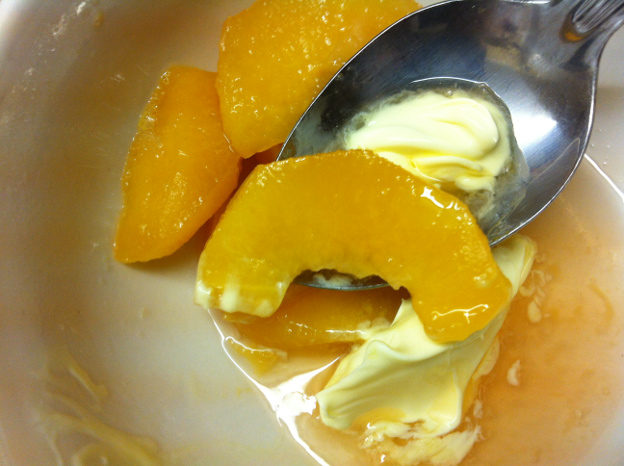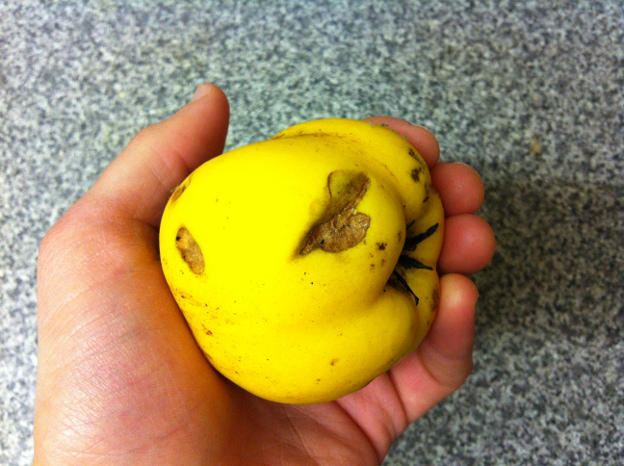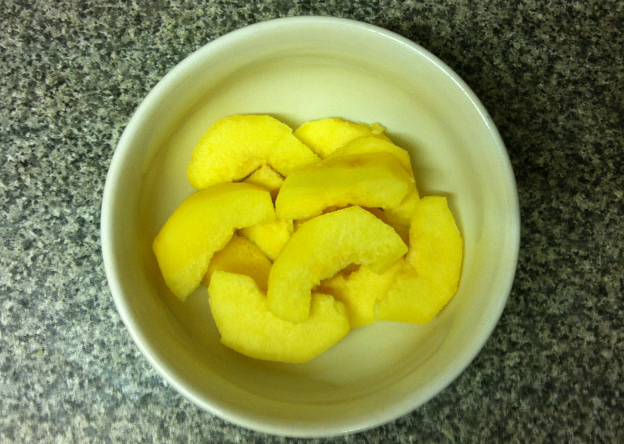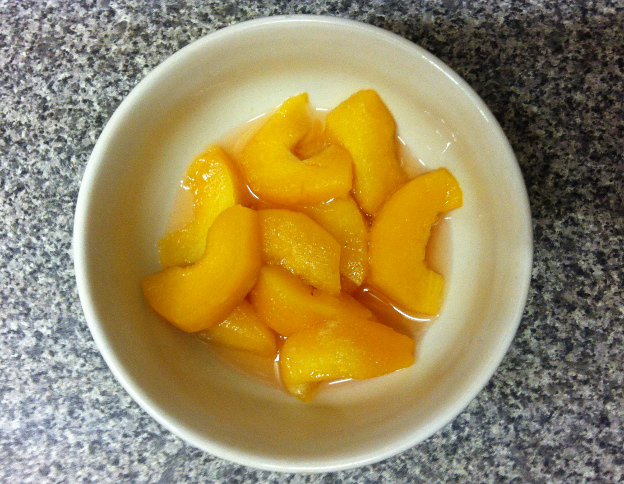Here at Slightly Self-Sufficient HQ, we love quinces. This fascination started about four years ago when we followed a Nigel Slater recipe for a Christmas pudding which called for a couple of quinces. Neither of us had ever used one before, and we found them astonishingly difficult to source. Then, in a remarkable act of serendipity, I started helping at a local community garden and found that there was a quince tree growing there. It had been a poor year for them, but I was told to help myself. So I took the two we needed for the recipe and we made our Christmas pudding.
Of course there are so many bold flavours in a Christmas pudding, especially in this Nigel Slater one which also uses stem ginger and of course brandy, that a relatively small amount of quince wasn’t particularly distinguishable. And so it was that we ate our first quinces without really appreciating how gorgeous they are.
The next year there was an enormous crop at the community garden and I didn’t feel at all bad about taking more than the two we needed for our Christmas pudding, because none of the other volunteers were taking any. That year we discovered the joys of poached quince.
The great thing about the quince is that it has such an amazingly aromatic flavour. It’s hard to describe. I’ve heard various attempts at describing it, a mixture of an apple and a pear with a hint of pineapple was one. I don’t agree, but I can’t offer anything better. Let’s just say that hiding it in a Christmas pudding isn’t doing it justice.
Our desire to experience that burst of flavour on an annual basis lead us to purchase our own dwarf quince tree which we are growing in a pot. Last year was the first year we had it, and it didn’t produce any fruit. This year it produced just one quince, which I have posted a few photos of throughout the year. This weekend we returned home to find our single quince had fallen from the tree and was lying rather damaged on the floor below.
Sad though it was to see our beloved and eagerly awaited first ever homegrown quince in such a blemished state, there was also something exciting about it. There was no more waiting, the immensely flavoursome experience that is the poached quince would have to come soon.
When researching quince recipes about three years ago, I found that some people like to add spices such as cloves and star anise. Wishing to mask the quince flavour as little as possible, I decided to stick to a recipe that promised to let the quince do the talking. It was this flavour that we fell in love with. So it was an approximation of this recipe that we decided to use with our first ever homegrown quince. Here’s what we did:
1. Peel, core and slice the quince. Quinces are very hard fruits. Our tip for coring them is to slice them into quarters first, then carve the cores out. Slice the quarters into thinner slices if you so desire. Ideally the slices should all be about the same thickness so they soften at the same rate. Place the quince slices into a pan.
2. Add a little caster sugar. We aim for about a seven to one ratio of quince to sugar. Our quince weighed 168g before we peeled and cored it, so we used about 25g of caster sugar.
3. Add a little lemon juice. We had half a lemon in the fridge that was a little past its best, so we squeezed the juice from that into the pan.
4. Add some cold water to the pan, just enough to cover the ingredients. Bring the pan to a light boil, then reduce the heat and poach. Cooking times will vary with the thickness of the slices and the density of the fruit. This one took about 45 minutes, a couple of years ago they took over an hour. It’s a case of checking periodically. You will know when they are done. They will start to turn a darker colour, somewhere between orange and pink, and they will become very tender.
You will now have some unbelievably delicious tasting (and smelling) quince slices in an almost equally delicious light syrup. These will be delicious as they are, warm in their syrup. That’s certainly how we ate this one. However, last year we left them to cool and then stored them in the fridge for a few days (warning: this requires some serious will power!), and then served them as they were and also tried them with a little yoghurt. All of the above were absolutely delicious. We can’t recommend the quince highly enough.
If you’re having trouble sourcing quinces (I’ve certainly never seen one in a supermarket), our tips are to check farmers’ markets and greengrocers (our local greengrocer did have some quinces the year before last, but they sold out before we got there). Failing that, join a community garden/orchard or buy your own tree. This is a crop which it really makes sense to grow your own. You won’t regret it.







